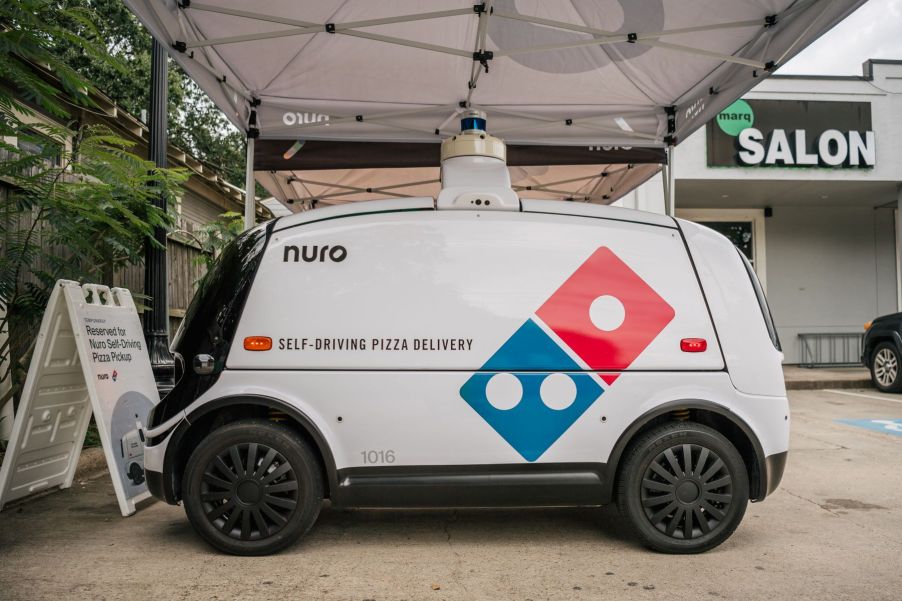
Oops: Google Funded Its Future Competitor in Self-Driving Delivery Vehicles
Autonomous vehicles are the cars of the future, but unlike other predictions, scientists and engineers have been making steady progress toward autonomous vehicles. To be clear, automakers are still far away from building a truly autonomous car, but these types of vehicles aren’t a pipe dream. Two companies working on making autonomous vehicles right now are Google and Nuro, and funnily enough, Google actually helped fund Nuro in the past.
What is Nuro anyway?

Cars are versatile tools, and we use them for a lot of things. For example, Tesla and other automakers are trying to improve on their semi-autonomous self-driving technology so that drivers don’t have to drive. Other companies, such as Waymo, are trying to create autonomous vehicles to taxi people around. However, one crucial function of cars is to deliver goods to places.
This is where Nuro comes in, according to TechCrunch. Nuro specializes in making autonomous delivery vehicles, allowing it to ignore an issue that other companies are running into. This is because Waymo, Tesla, etc., have to make sure that any semi-autonomous self-driving feature ultimately keeps the driver and passengers safe. Nuro doesn’t have to do that.
As such, Nuro has less red tape to go through than other companies do. This has allowed Nuro to roll out its autonomous delivery vehicles faster than other companies have been able to. To be clear, though, Nuro isn’t alone in this field. Waymo is also entering the autonomous delivery vehicle segment. However, Waymo, which Google owns, helped fund Nuro from the very beginning.
How Google helped fund Nuro
As TechCrunch wrote, Nuro’s origin story starts at Google’s autonomous driving project. Google had something called the “Chauffeur bonus plan,” and the idea was to encourage engineers to keep working with Google’s autonomous tech project by providing them a bonus. Dave Ferguson and Jiajun Zhu were two Google engineers who benefited from that plan.
Due to how the plan worked, anyone who left after the first payout would also receive a lot of money on top of that payout. That’s precisely what Ferguson and Zhu did in 2016. They received about $40 million each thanks to that bonus plan, and they used that money to start Nuro.
Another former Google engineer, Russell Smith, got a smaller amount of money and joined Nuro shortly after. So, with that much money between them, they paved the way for Nuro’s success. Of course, Nuro needed investment from elsewhere, too, but without that big bonus from Google, Nuro wouldn’t have been possible.
A look at Nuro’s autonomous delivery vehicles
Early on, TechCrunch wrote that Nuro used the Toyota Prius as its car of choice. However, not long after, Nuro built and started using its own vehicle, the R1. Since the R1 didn’t need to worry about humans being inside it, it looks different from a regular car. The R1 was used to deliver groceries, and, like other autonomous cars, the R1 has some advanced tech on and in it.
TechCrunch says that the R1 has 12 cameras, radars, and a LiDAR as well. It’s an EV, but it will only be able to travel up to 25 mph. On top of that, Nuro doesn’t currently plan on selling its cars to anyone. Instead, Nuro intends to build 5,000 vehicles similar to the R1 and then operate them through business partnerships.
The R2 is similar to the R1, and it’s currently being deployed as a prototype in select places. For example, Dominos is delivering pizzas with the R2 in Houston, Texas. Certain locations in California and Arizona have them roaming around, too.


